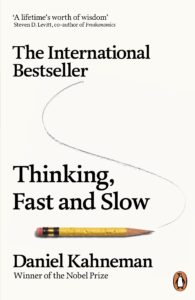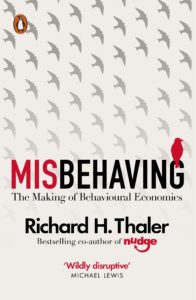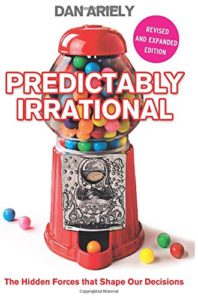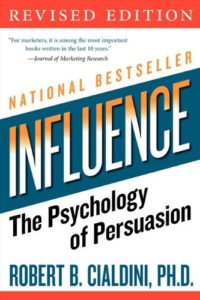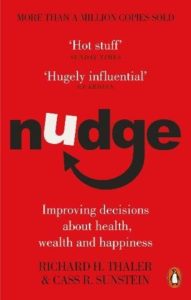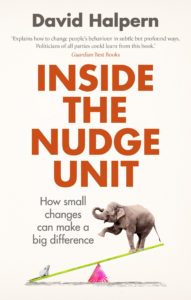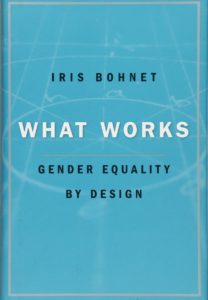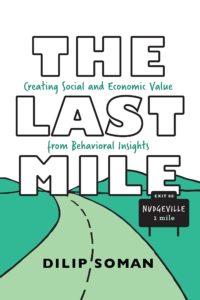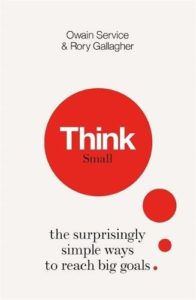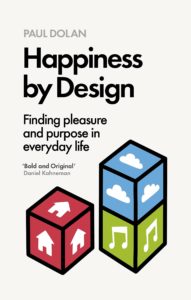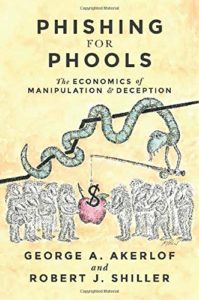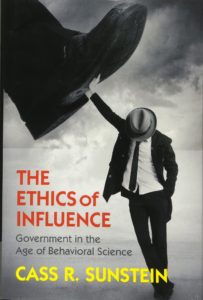Your essential Behavioral Economics reading list
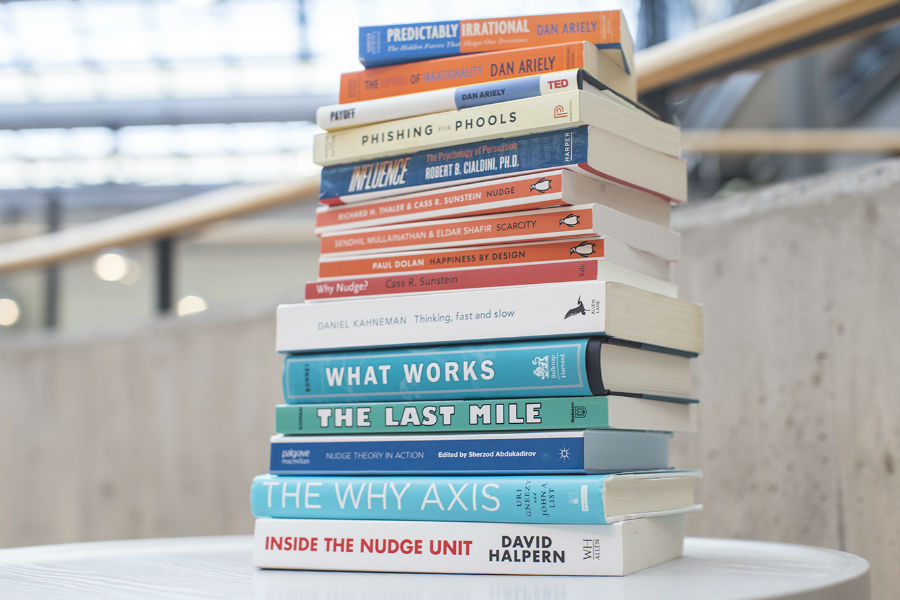
Interested in expanding your knowledge on the fascinating field of Behavioral Economics? Look no further. This is a list of the books that we have found most inspiring / relevant / helpful in getting a grip on this fascinating and ever evolving field. It includes some classic gems as well as some more current releases (the most recent being November 2017). We have even divided the list to a few sub-sections depending on your focus and level of previous knowledge.
Behavioral Economics basics – start here
We start, as one should, with the classics. These books are the most essential and most influential. They provide an introduction to the field of Behavioral Economics, each one from its own unique angel. If you are curious about the field and want an introduction to the basic concepts and the most influential thinkers, look no further than these “fantastic four”:
Thinking, Fast and Slow by Daniel Kahneman
Kahnenan’s seminal book from 2011 quickly became a long-standing New York Times best seller. The book summarizes research conducted by Kahneman and his longtime collaborator Amos Tversky in the 70s. The two were psychologists, and together their ideas served as the base on which Behavioral Economics will develop. Kahneman’s book is not an easy read, but it will reward the reader with a deep understanding of the concepts on which the entire field is built on, such as heuristics and biases and loss aversion.
Misbehaving: The Making of Behavioural Economics by Richard Thaler
Richard Thaler, a Nobel laurate, is considered by many the father of Behavioral Economics. This book is essentially his biography, which is intertwined with the biography of the field itself. Thaler was heavily influenced by the ideas of Kahneman and Tversky, and started applying them in economic models of decision making. His contribution lies in making the ideas applicable in real world setting (see nudging section a bit further down).
Predictably Irrational: The Hidden Forces That Shape Our Decisions by Dan Ariely
Ariely’s book has a simple premise: 1) People often stray from previously assumed rational decision making patterns, 2) the nature of these errors of judgment is foreseeable, hence – predictably irrational. Ariely is a researcher in psychology and Behavioral Economics, and as his numerous popular TED talks would attest, his strength lies in making heavy research accessible and human-friendly. This book does a beautiful job in summarizing complex concepts in a digestible way.
Influence: The Psychology of Persuasion by Robert Cialdini PhD
This book, written in the 80s, has sold over three million copies and been translated to thirty languages. It is truly a classic. The book explores the psychology of how and why people get convinced to do something they did not necessarily intend on doing. It explores implications and gives concrete advice on how to become a master of persuasion. The principles in this book underlie many of the applied interventions of Behavioral Economics (see below), and therefore worth understanding.
Behavioral Economics in practice and nudging in particular
If you are particularly interested in applications of Behavioral Economics in different areas of “real life”, and the concept of nudging – designing choice environment to encourage a certain behavior without limiting choice or monetary incentives, these are the books you should start with.
Nudge: Improving Decisions about Health, Wealth and Happiness by Richard Thaler and Cass Sunstein
In their seminal book from 2009, Thaler and Sunstein coined the term “nudging”, referring to applying tools from Behavioral Economics and knowledge about decision making processes from psychology, to design better choice environments for individuals. Awkwardly enough, the original title of the book was supposed to be “Libertarian Paternalism”, but a clever publisher understood that it had a lower selling potential than “Nudge”. This book is simply a must for anyone interested in behavioral science in practice.
Inside the Nudge Unit: How Small Changes Can Make a Big Difference by David Halpern
The Behavioral Insights Team, commonly known as “The Nudge Unit” is perhaps the most-well known consulting organization applying behavioral principles to address real world problems. The BIT has worked with issues from tax compliance, unemployment, diversity, healthcare, education and more, systematically testing behavioral solutions. The BIT started as a small unit within the British government, and has since span-off to a semi-private international consultancy with over 100 employees. This book serves as a road map of how they got there.
Advanced level – deep dive on a particular aspect
You’ve already read some of the classics above and now you want to deep dive on a particular topic. The books listed below will provide a deeper perspective into topics that involve leveraging behavioral tools to improve workplace design, diversity, decision making, policy and more.
What Works: Gender Equality by Design by Iris Bohnet
Bohnet, a Professor at Harvard University, applies the paradigm of Behavioral Economics in the workplace, and specifically, building workplaces that enable diversity. Diversity is a sought after concept for many employers, who invest heavily in diversity programs and other informational campaigns. Unfortunately, Bohnet demonstrates that this approach less than effective. Instead of trying to reduce bias via an attitude shift, companies should invest in taking away the sources that create the bias. A ground-breaking book on how behavioral science can improve HR practices.
The Last Mile: Creating Social and Economic Value from Behavioral Insights by Dilip Soman
Why is there so often a gap between well-thought through strategies and plans and execution that fails flat? We have all seen it. In product design, public policy or a recruitment process. Someone spent a lot of time crafting a strategy, which then fails to achieve the desired effect once launched. This book explores this phenomenon, dubbed “The Last Mile”, and how to close this gap using principles from behavioral science.
The Why Axis: Hidden Motives and the Undiscovered Economics of Everyday Life by John List and Uri Gneezy
Behavioral economics is not only about nudging. It is also about crafting clever incentive systems in a way that promotes a desired behavior. As well as about scientifically testing different interventions to find evidence of what brings the largest effect. This book will expand your understanding on how to do both.
Nudge yourself
If you are interested in applying the Behavioral toolbox on yourself, this section is for you. Maybe you want to lose a few kilos, save more money or use social media less. Whatever your goal is, insights from Behavioral Economics can help you nudge yourself in the right direction.
Think Small: The Surprisingly Simple Ways to Reach Big Goals Hardcover by Owain Service and Dr Rory Gallagher
The founders of the Behavioral Insights Team (see above) turn their focus inwards – to ourselves. Sure, behavioral science is being used more and more to address societal issues or promote organizational goals, but what about personal ones? How can we nudge ourselves to better health, increased savings, or a better career? In this book, the authors apply their learnings from applying behavioral economics into a simple framework that can help each of us reach our own goals.
Happiness by Design: Finding Pleasure and Purpose in Everyday Life by Paul Daulan
Behavioral Economics is not the only field in social science that has been exploding in popularity in recent years. Positive psychology and the study of wellbeing is another. This book puts together the two approaches and the result is a fresh take on the “science of happiness”. Much has been written about how we need change the way we think in order to be happier, but how about making small changes in our environment to make us happier?
Dollars and Sense: Money Mishaps and How to Avoid Them by Dan Ariely and Jeff Kreisler
Dan Ariely’s second entry to our list is a book that highlights our irrationalities when it comes to money. We get mislead by relative prices (half off!), we avoid the pain of paying (Swish!), and we get swayed by the magic of language (it’s artisanal / locally-grown / grass-fed!). These are just few of the many pitfalls of managing our personal finances, which we could all be better at. And luckily, the book comes with tips on how to avoid them.
Ethical considerations
Any tools that leverage human psychology should be treated with respect. Those of us who practice in nudging and Behavioral Economics have a big responsibility not to abuse these tools and to avoid manipulation. Richard Thaler often encourages to “nudge for good” and that is something that we at Impactually believe in. If you want to learn more about the ethical aspects, making sure you don’t slip, these books are for you:
Phishing for Phools: The Economics of Manipulation and Deception by George Akerlof and Robert Shiller
If behavioral economics builds on individuals’ vulnerabilities as irrational decision-makers, it is only natural that in the harsh reality of the free market, there will be someone who will try to take advantage of that. For example, gyms capitalize on the “fresh start effect” of New Year resolutions and offer tempting 1-year contract that are hard to get out of once we have understood that there is little chance we will use them as much as we had hoped. How these kind of manipulations come to be and how to protect yourself from them is the topic of this book.
The Ethics of Influence: Government in the Age of Behavioral Science by Cass Sunstein
In their book “Nudge”, Thaler and Sunstein started addressing the question of the ethics of nudges. Nudges should avoid manipulation, be easily opted-out of, and promote individuals’ and societies’ wellbeing. In this book, Sunstein takes this notion even further and explores additional aspects of using behavioral science in public policy.
Want to hear us talk more about behavioral economics and science? Check out the preview of our online course “Get behavioral science to work for you”, at the bottom of the course page.
You can also download our free and easy-to-use Introductory Guide, which introduces the foundations of the field for people who want to work with behavioral science and nudging in practice.
Hope you enjoyed our selection. Got anything to add? A book we simply must-read? Write us!
—

Nurit Nobel
+46 76 191 71 34
I want to learn more!
We hear you. If you’ve already read our post about what behavioral economics is, and how it can be used in practice, then here’s a list of TED Talks and other online resources. Other interviews, articles and videos we have published elsewhere can be found here. You are also welcome to sign up to our newsletter, where we give you relevant news and links on behavioral economics.
I’m convinced that behavioral economics can do wonders for me. Now what?
Contact us and let’s talk about how we can help you get going.

We are a management consultancy applying behavioral insights to create business and societal impact. We use our expertise in behavioral economics and social psychology to design evidence-based solutions to critical challenges. We leverage scientific methods to identify interventions that will have long lasting, measurable effects.
DISCLAIMER
FOLLOW US
CONTACT
Email: info@impactually.se
Org. no.: 559167-0327
Web Design: Sharp Studio
Copyright Impactually 2024

